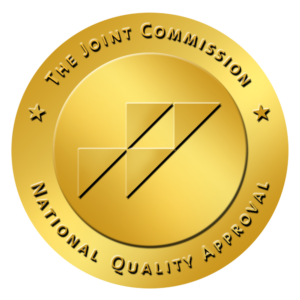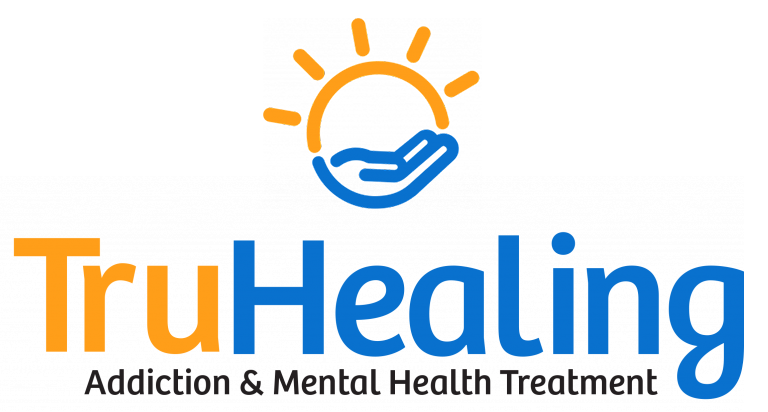Can you tell me about your work with The National Institute on Drug Abuse [NIDA]?
I’ve been at NIDA almost 10 years, and I’ve worked on justice issues pretty much the whole time. A few years ago, Congress made a big appropriation to the National Institutes of Health[1]—which included NIDA—to address the pain and opioid public health crises. That became what’s called the Helping to End Addiction Long-TermSM Initiative[2], or NIH HEAL Initiative.SM
The NIH HEAL initiative gave us the opportunity to launch one of the biggest justice programs we’ve ever introduced, the Justice Community Opioid Innovation Network [JCOIN]. Across the whole initiative we have a shared vision, which is to ensure that every person with a substance use disorder who is involved in the justice system has access to effective treatment.
We’re about two years old, so we’re just starting to take our training wheels off. We’re hoping that over time, JCOIN will become a go-to resource for both researchers and practitioners. Our hope is that once we achieve that vision, we can make it faster to turn science into solutions that people out in the community can actually put into practice.
That’s great. That was one of my questions, how it translates to practice.
Yeah, traditionally what happened is our researchers did these great studies and published their papers; the idea was that people would see the research and find it so compelling they’d have to act on it. But that’s not really how it works, and it meant the science was really slow to get to practice.
In JCOIN, we’ve built a lot of opportunities to hear from our stakeholders—the sheriffs, judges, probation officers, and treatment providers—so we know what they’re looking for and what questions they have. We have a training program, where we recruit both people who are working in these community settings and researchers who are earlier in their careers; they learn together about how to do research in these settings and the different ethical and pragmatic challenges that come up.
We’re doing a lot of things in JCOIN that aren’t strictly a classic research project; we’re trying to break down some of the silos and build communication across the different stakeholders.
What does the treatment landscape look like now with medications for opioid use disorder [MOUD] in prisons and jails?
Historically there hasn’t been a solid source of information about how many jails are providing medications. One of the very first things we did in JCOIN was launch a survey to try to figure out the answer to that question. It took place over the last couple of years and our researchers are just wrapping up, so we hope to have a solid, rigorous answer soon.
But at least historically, it was a small minority of jails offering medication. That has been changing rapidly, but our sense is that as it’s changed, maybe only one medication is offered in a jail; maybe the medication is only offered to a specific population, like women who are pregnant; maybe it’s only offered if you’re already on a medication when you come into the jail.
We’re trying to figure out who’s providing medications, what they’re providing, where the gaps are, and how we can provide support to reduce those gaps.
Yeah, I saw that JCOIN was doing research about jails that are already providing MOUD.
Yeah, for a long time at NIDA—even before JCOIN—we’ve supported research looking at what happens when you provide medication in jails.
One of our researchers partnered with the state of Rhode Island, which was among the first places that offered all three forms of medication [buprenorphine, methadone, and naltrexone] to people in jail or prison. They found that when all three were offered to people while they were incarcerated, they were much less likely to die of a drug overdose when they returned to the community.[3]
The first couple weeks that someone returns to the community, there is a really high risk for mortality. Offering those three medications really helped reduce that risk—so much so that it reduced risk not just for those folks; you can see the impact on mortality rates at the community level in Rhode Island. That’s really compelling, and lots of states started modeling after that.
You kind of answered two of my questions: “How can MOUD help people with addiction in the justice system?” and “What are some ways to reduce rates of relapse and overdose after reentry?” Can you go into more detail about that?
Sure, yeah. If people are already on medication and they go to jail, the standard of care has been just to detox someone. Often that’s really uncomfortable for people. There are medications that can make detox less uncomfortable, but those typically aren’t offered in jails.
If someone has a really negative experience of detoxing when they go to jail without any supports, it can make them less likely to engage in treatment when they return to the community.[4] It’s important what happens while people are incarcerated, but it’s just as important what happens when they return to their communities. There has to be that linkage.
So many people who become incarcerated have Medicaid, and it can either get turned off or paused while someone is incarcerated. If you return to the community and don’t have insurance, you can’t get access to treatment; you can’t pay for it because you don’t have a job.
All those things mean that even if someone was getting treatment while they were in jail, they can’t continue when they return to the community. The evidence is becoming really compelling that you have to have both pieces in place.
And what are some solutions to that—how are people linked to treatment and care?
In JCOIN, we have six studies that are testing models of how to link people to treatment when they return to the community. Some use peers who have lived experience. We have one that uses what’s called the Transition Clinic model, which brings people into primary care clinics and provides them all of their care, including medications.[5] Doing things like making sure people’s insurance is ready to go as they return to the community, so they don’t have to spend a month or more trying to figure out how to get insurance.
I think it’s important not to be looking for a one-size-fits-all. We hope that when these studies are completed, we’ll be able to offer a lot of different options, so that people can find what works best in their particular community with their particular constellation of service providers.
What drew you to this work?
In some ways I fell into it, and in others it was always the path I would end up on. When I started my career, I was really interested in what happens to children who come into contact with the legal system, particularly kids who are victims of maltreatment or abuse. I did a lot of work on that when I was in graduate school. Then I came to NIH and NIDA and ended up morphing into juvenile justice.
I started looking at what happened to kids, and then what happened to kids as they grew up. I see it all as connected, because what happens to kids depends on what happens to their parents. If we don’t support parents in becoming the best versions of themselves, we create these cycles that are very difficult to escape. I’m also a child of a parent that was incarcerated for a large part of my childhood, so these things come together in the work I do.
Are there any logistical barriers to providing effective treatment in jails and prisons?
I strongly believe it’s important for people to have access to medications, but it’s also really hard for jails and prisons to pull this off. Stays for people in jail can be really short; it can be really hard in a short amount of time to identify what people need and get them connected to care.
A lot of the jails we’re working with are trying to figure out how to offer methadone, and that’s extraordinarily difficult; it’s shocking how difficult it is. They have to make these really complicated decisions about what is most cost-effective.
Through JCOIN, we’ve created partnerships between people in jails who are working to set up access to all three forms of medication and economists on our research team; we’re hoping to build out a tool where if you are a jail or prison that’s considering doing this, you can figure out the best option given how many people you’re serving or what contracts you’re able to set up with providers in your community. We’re trying to give folks in jails the research and tools to make providing these medications a little easier.
It seems like every step of the way there’s partnerships in the work you’re doing.
Yeah, and that’s really exciting. Even when I was doing child welfare work, a lot of it was partnerships. I think a lot of the hard problems are about getting people to work together across their typical silos. So that’s been a key theme for me in my career—the kind of thing I find really interesting to work on and solve.
[1] https://www.nih.gov/news-events/news-releases/nih-launches-heal-initiative-doubles-funding-accelerate-scientific-solutions-stem-national-opioid-epidemic
[3] https://jamanetwork.com/journals/jamapsychiatry/article-abstract/2671411
[4] www.sciencedirect.com/science/article/pii/S0740547215002871
[5] https://www.sciencedirect.com/science/article/pii/S0740547221000416







